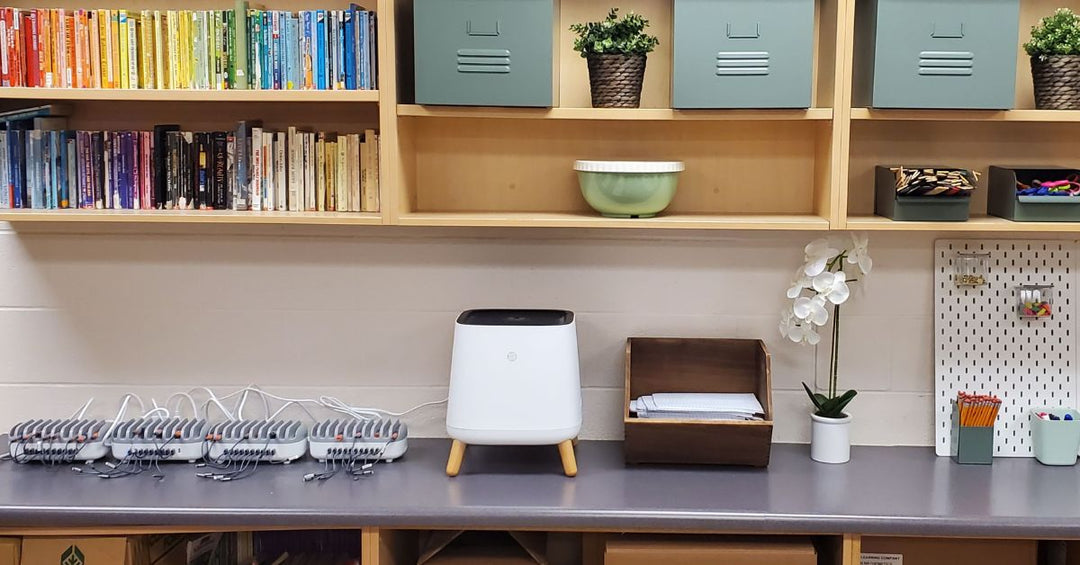4 Reasons You Should Be Measuring Your Indoor Air Quality

Indoor air quality (IAQ) affects everything from your overall health to comfort and productivity. However, many people overlook how the air inside their homes and workplaces can contain more pollutants than the air outside.
By measuring IAQ, you can receive critical insights into what you’re breathing in, which can help you take actionable steps to improve air quality. Here are four reasons you should measure your indoor air quality.
1. Protect Your Health
Even if your space appears clean, the air itself may contain harmful particles invisible to the naked eye. Indoor air can harbor mold spores, dust, pollen, volatile organic compounds (VOCs), and even carbon monoxide.
Measuring your air quality identifies exactly which pollutants are present. Whether you’re dealing with high pollen counts in the summer or increased VOCs due to household cleaners, knowing the composition of your indoor air allows you to respond effectively.
Reduce Respiratory Issues and Long-Term Health Risks
Pollutants such as dust, mold, and pet dander can trigger asthma, allergies, and frequent respiratory infections. Breathing in microscopic pollutants like PM2.5 that enter your bloodstream can contribute to heart attacks and cause cancer over time.
Likewise, dangerous gases like radon and carbon monoxide are often undetectable without proper equipment. Continued exposure to radon increases the risk of lung cancer, while carbon monoxide exposure can lead to poisoning or even death.
On the flip side, good air quality can reduce health risks. Imagine waking up with fewer allergy symptoms or moving through your day without headaches caused by VOCs. IAQ monitors equipped with sensors for contaminants and gases are lifesaving tools that give you the opportunity to intervene with air purifiers or optimized filtration systems before severe health concerns arise.
2. Enhance Daily Comfort

The air you inhale affects how you function in your day-to-day life. For this reason, maintaining good indoor air quality isn’t just about avoiding sickness; it’s also about comfort.
Consider how pollutants like fine dust or strong odors can make your living space or workplace feel less inviting, even when temperatures are ideal. IAQ measurements allow you to pinpoint the sources of discomfort and address them effectively.
Did you know that high humidity levels can lead to increased mold growth, potentially impairing your comfort and health? With an IAQ monitoring system, you’ll know whether to switch on a dehumidifier or improve ventilation in specific rooms.
Control Humidity Levels
Balanced humidity protects your home’s structure and sets the stage for a more comfortable living experience. Excessive moisture encourages mold growth and dust mites, while extremely dry air can irritate your skin and airways. Measuring humidity as part of air quality monitoring helps you address extremes and determine if your home needs a dehumidifier or moisture added through a humidifier.
Support Better Sleep
Air quality directly influences sleep quality by affecting how well your body regulates temperature and breathes during rest. High humidity, pollutants, or allergens in the bedroom can create disruptions. By measuring and addressing these factors, you can create an environment that’s more conducive to restorative sleep.
3. Create a Better Work Environment
Just as you should track IAQ at home, you should measure your indoor air quality in the workplace too, especially considering the many hours you spend there. This good habit can lead to changes that can improve focus and efficiency and drive better outcomes for employees and employers alike.
Improve Productivity and Focus

When workplace air lacks sufficient freshness, it can lead to lethargy and decreased productivity. High concentrations of carbon dioxide in office spaces can cause fatigue, while pollutants like VOCs from furniture or cleaning supplies may lead to frequent discomfort or headaches. Measuring IAQ allows for adjustments that enable clear thinking and sustained energy throughout the day.
Reduce Sick Days
Airborne illnesses and allergens circulating in closed spaces often contribute to frequent employee absences. Establishing routine monitoring and improvements can reduce the risk of airborne contagion, promoting a healthier and more reliable workforce.
4. Gain Peace of Mind
Air quality monitoring doesn’t just help with responding to and mitigating daily pollution; it also supports homeowners and business owners in preparing for specific seasonal or circumstantial challenges.
Wildfire season, for instance, can drastically increase particulate levels, affecting indoor air even miles away from the flames. Allergy season can flood the air with pollen that penetrates homes and workplaces.
Similarly, floods or water damage can lead to mold spores that pose long-term health concerns. With an air quality monitor, you receive early alerts about these issues, giving you time to deploy air purifiers or increase ventilation before problems escalate.
Bring Clean Air to the Forefront
Measuring indoor air quality isn’t just about identifying invisible problems; it’s about taking an active approach to improve indoor environments for the better. From safeguarding your health to improving productivity and performance and reducing environmental toxins, IAQ monitoring and air purification offer benefits for nearly every aspect of life.
By acknowledging the hidden influences of the air you breathe, you can make smarter decisions to promote your well-being and reduce risks at home, work, and the spaces in which you spend so much of your life.
Identify When You Need an Air Purifier
Even with regular indoor cleaning, pollutants can still linger in the air. Fortunately, purifiers are a practical solution for reducing hazardous air quality in various seasonal conditions and improving indoor spaces.
Air purifiers effectively capture particles like dust, allergens, and even microscopic pollutants. Equipped with HEPA filters, these purifiers trap 99.97 percent of airborne particles. Ultimately, air quality monitors are an essential tool for knowing when to activate or adjust your air purifier.
High-quality monitors from Smarter HEPA, a leading name in improving indoor air quality, give real-time feedback on particle levels, humidity, and pollutant concentrations. The precision and reliability of our advanced air quality monitors help you target specific concerns rather than relying on guesswork.
Take the First Step Toward Cleaner Air
Tracking air quality often identifies inefficiencies in your HVAC systems at home and in the office. Systems running harder to overcome poor airflow or filtration waste energy and increase your utility costs.
Implementing energy-efficient air purifiers for sale from Smarter HEPA is a great way to improve indoor air quality. Our affordable, durable, and effective HEPA air purifiers combat various air quality concerns. In a single pass, our machines clear living rooms, bedrooms, bathrooms, kitchens, offices, and other frequented spaces of allergens, smoke, and VOCs.
By combining air quality monitoring with energy-efficient purifiers, you can address odor and pollutant issues at their source. Instead of masking the problem, you eliminate it in a more sustainable way that’s healthier for you, your loved ones, and your professional team members.




